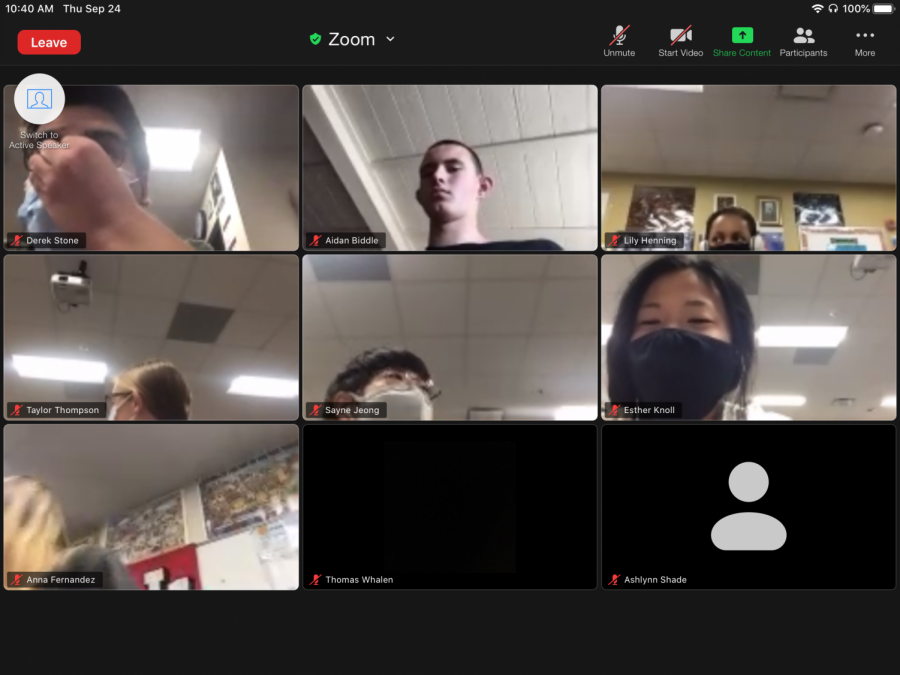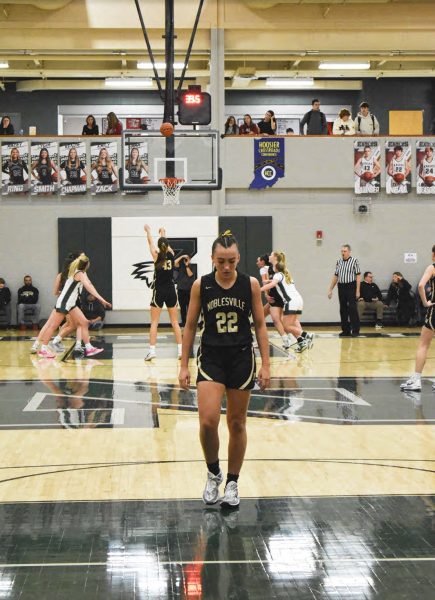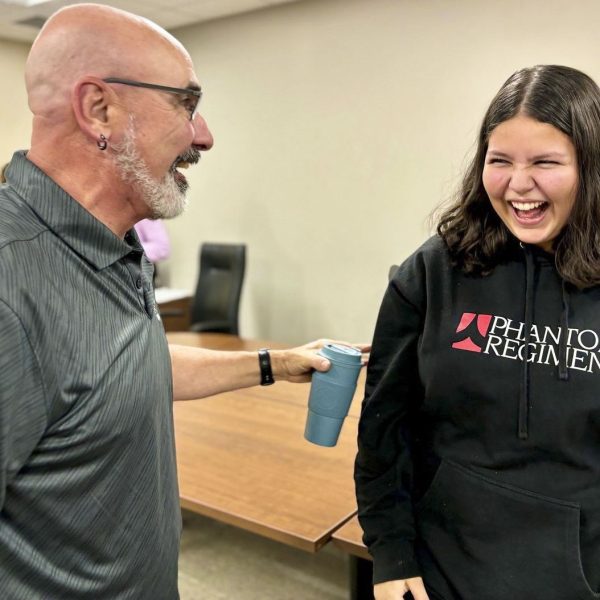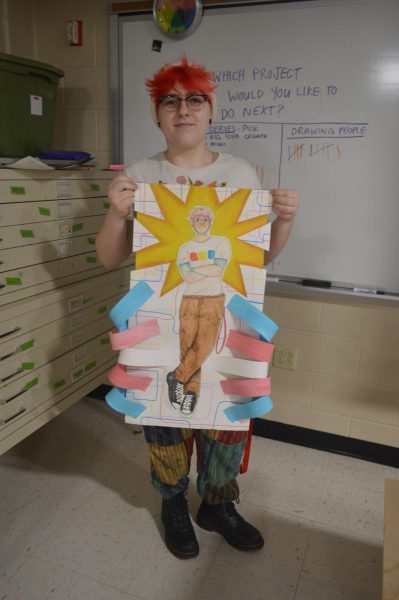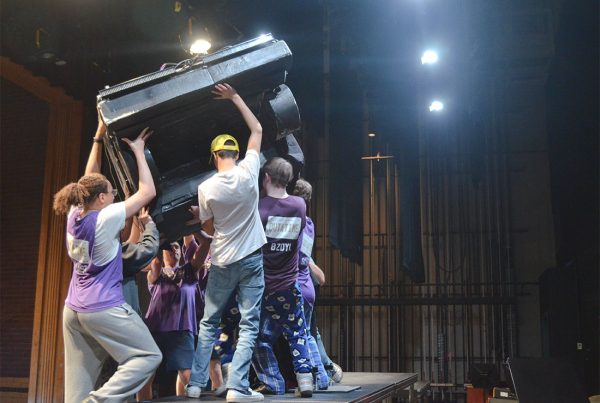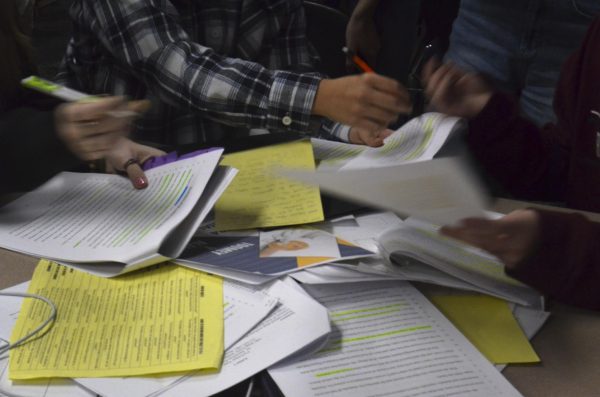Homebound: Due to COVID, teachers are confined
Teacher’s are forced to teach from home
October 9, 2020
This year, several teachers have decided to teach from home rather than in school due to a variety of reasons, from living with someone at-risk and needing to stay home, to being forced to stay home due to their own health problems. This throws a curveball into an already difficult and peculiar year, causing students and teachers to adapt to a new way of learning.
“Online teaching is going as well as I expected. It doesn’t come close to face to face teaching, but I still believe kids can learn,” Spanish teacher Kevin Cole said.
Cole’s expectations match those of many teachers, especially for those teaching from home. They have all anticipated this year to be much different from other, normal years. Their expectations are altered, but teachers still push for this year to be as fluid as it can, which all depends on the student’s mindset for this year.
“Students have to be disciplined in everything they do because for many activities, there is no one observing them,” Cole said.
Discipline is very important this year, largely for students working from home. Being at home brings many more distractions than being at school, and there is no teacher to supervise students during the whole class.
“There are so many other distractions at home, and even in a classroom and without a teacher, you can get distracted by those things because the teacher can’t see what you’re doing,” sophomore Calvin Lighty said.
Teachers working from home cannot access their class nearly as much or use the tools provided for an in-person class, leading these teachers to have to change their plans for this year.
“My plans have changed for some of the projects I do that require a lot of group work and movement,” Psychology, Sociology, and Government teacher Stephanie Gilbert said. “Subculture Fair and Brain Surgery are big projects that aren’t possible with our current environment and protocols so I’m working on some new projects to take their place this year.”
Having to transfer a year’s plan from in-school to fully online is a daring task, but luckily for teachers, there are hundreds of apps to use to help do so. Teacher’s use Zoom, Google Meet, Socrative, Padlet and many other apps to help them teach.
“I use Zoom to be with my students virtually and then add in all the other things I’ve used for eLearning during the time we’ve been doing one-on-one instruction at NHS. I love Nearpod, Quizlet, Kahoot, Padlet and, of course, Canvas,” Gilbert said.
There is a surplus of different technologies for teachers to use when teaching from home, each coming with their own pros and cons. Many of these apps are new to teachers, forcing them to adapt to new technology, bringing many problems along.
“The biggest issue in the classroom is that sometimes the iPads pick up each other and start blaring a sharp noise that gets annoying,” senior Pent Asmler said.
No way of teaching virtually is perfect, and teachers are learning and adapting to it as it goes. A common challenge for students learning online is the actual learning, as problems can come up along the way and missing out on information happens much more often than learning in-school.
“It’s nice to be able to ask your teacher questions and get help on homework or the lesson, but now with the separation, it’s made it a lot more difficult to be able to do that,” sophomore Mia Price said. “If I have an issue picking up on something, I now have to re-teach myself until I have a better understanding.”
Students are often too nervous to ask questions over zoom, as they do not want to interrupt the lesson. Some teachers have noticed a difference in participation during teaching online.
“Participation is lacking. I think kids aren’t sure when they should speak. When they open certain links their video turns off. Are they working? Are my AP kids still speaking Spanish?” Cole said.
Teaching from home, fully virtually, is much different for students and teachers, and over time everyone will learn to adapt to the new way of learning fully online. Teaching virtually causes a lack in relationships with the teacher and students, which both students and teachers have recognized. Student’s opinions of learning from home compared to online differ, as some prefer to learn from home and online while others feel teaching in school with their teacher present is better for them. But for the teachers who are having to teach from home, their opinions on their work style is much the same.
“I was really nervous about teaching online at first,” said Gilbert. “I’m so happily surprised at how well it’s going. I look forward to seeing my students’ faces every day!”


